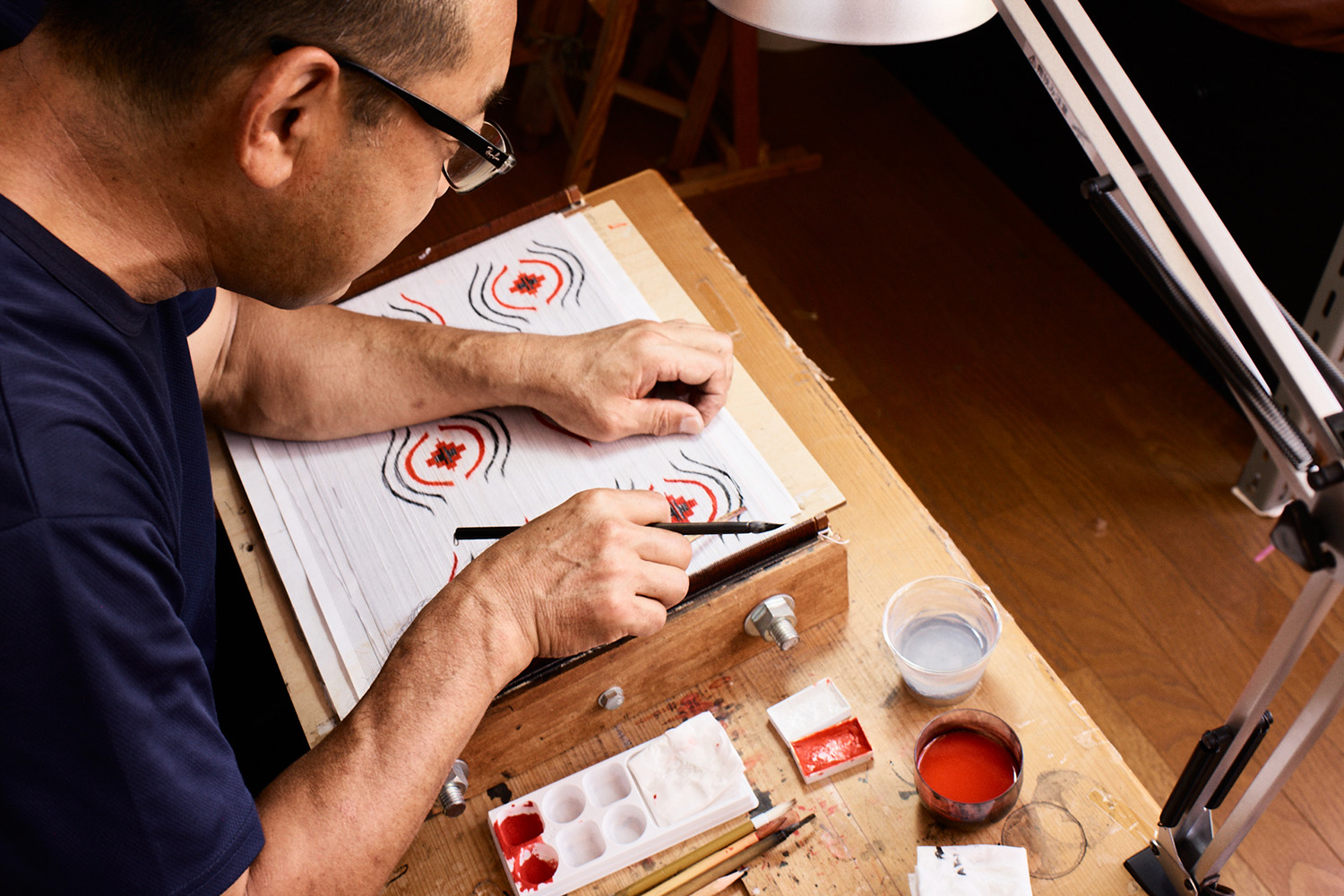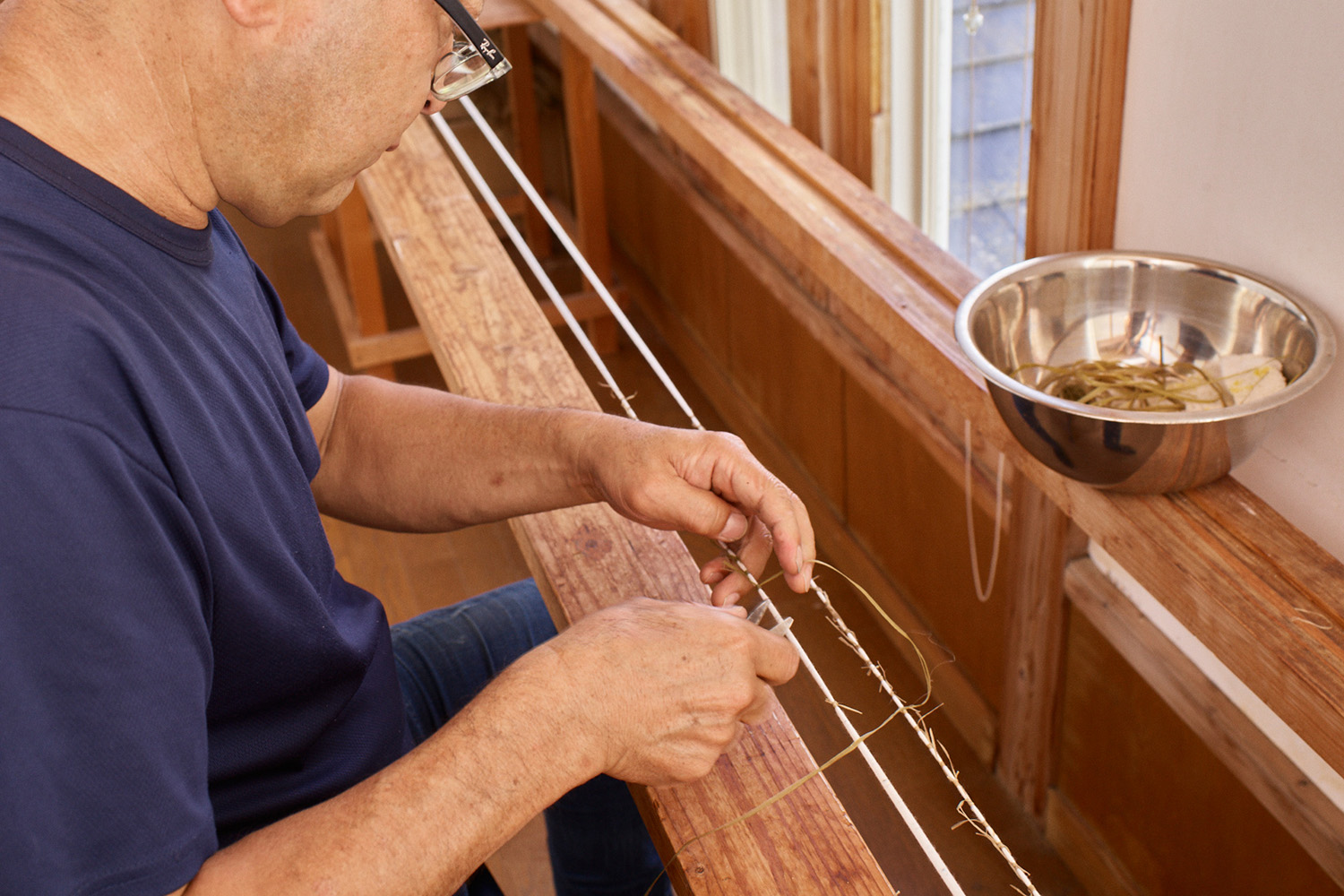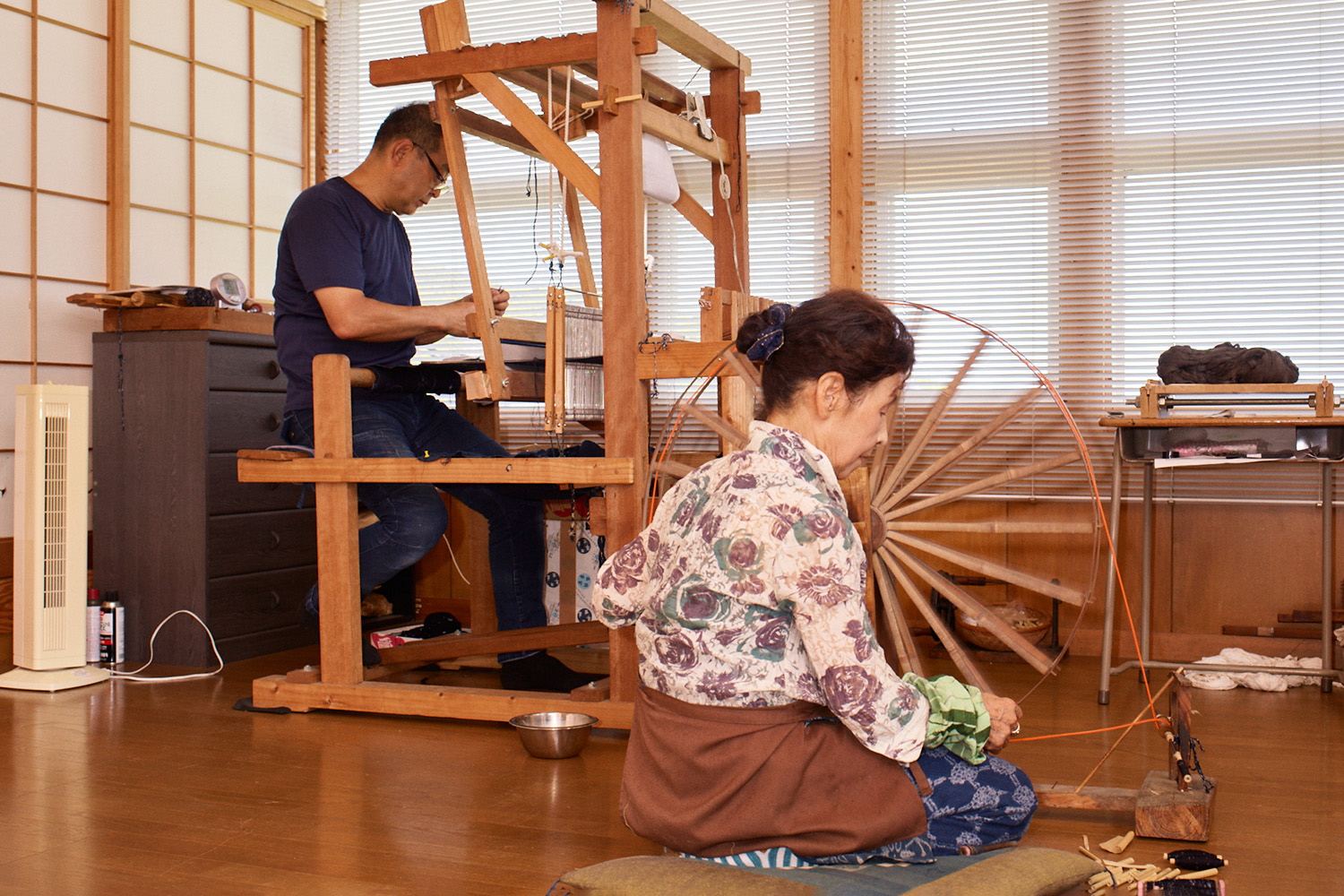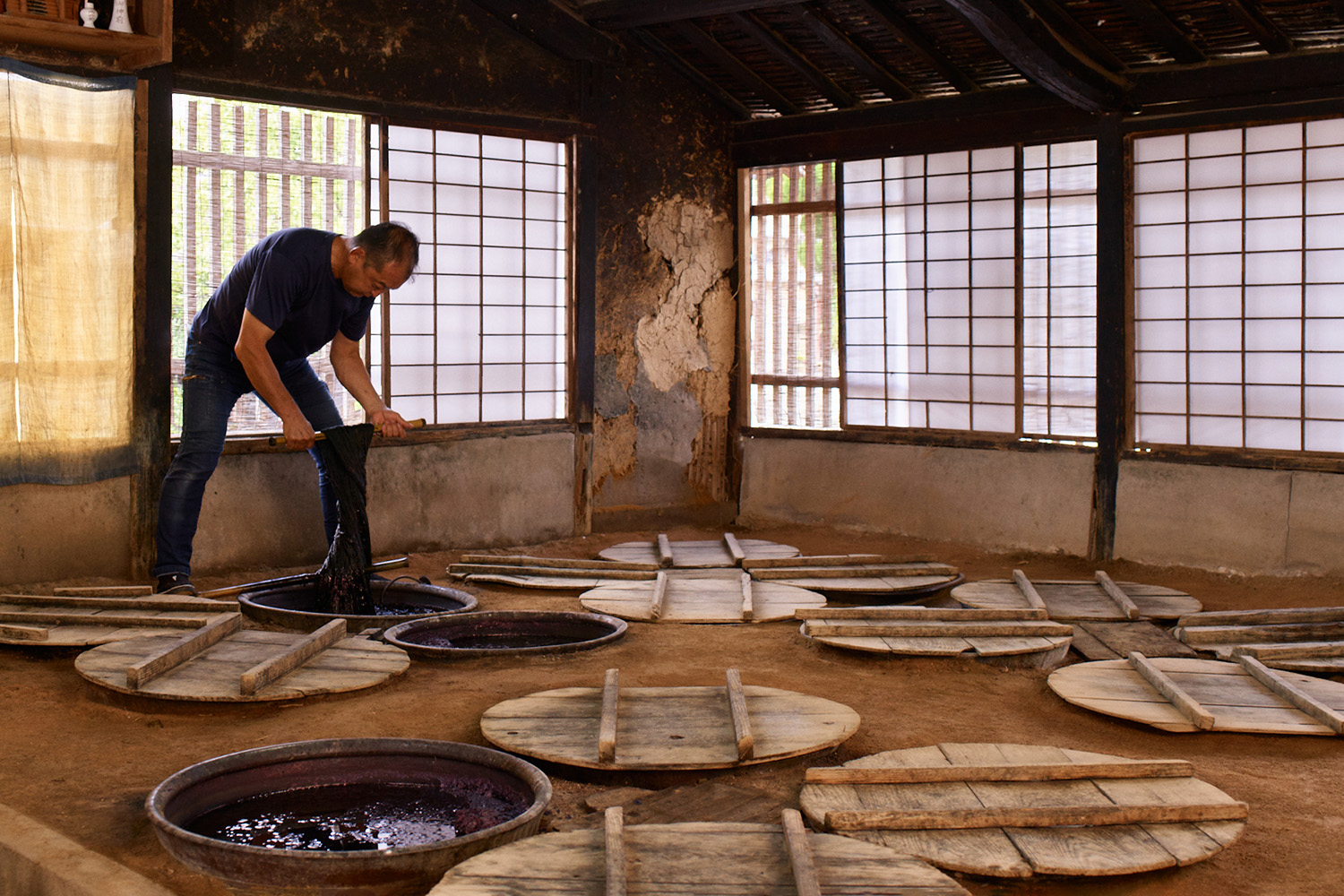









Shôji Yamamura is a fourth generation Kurume Kasuri artisan based in Kurume city in Fukuoka prefecture. A practical and popular clothing fabric among the Japanese since the late 1700s, Kasuri is woven with patterns made from cotton threads dyed with natural indigo after kukuri, the process of tying off sections to be kept undyed. While many workshops rely on machine weaving nowadays, Shôji’s atelier continues to carry out the entire process of kukuri, shoai (fermented dried indigo) dyeing, and weaving, all by hand. A fabric measuring 38 cm across and 13 m in length can take two to three months to finish. Shôji's pieces have a modern flair, ranging in colour gradients obtained from traditional indigo dyeing and herb-dyeing, and rich geometric patterns with a dynamic overall design. Kurume Kasuri remains an important intangible cultural property.


Shôji Yamamura